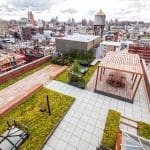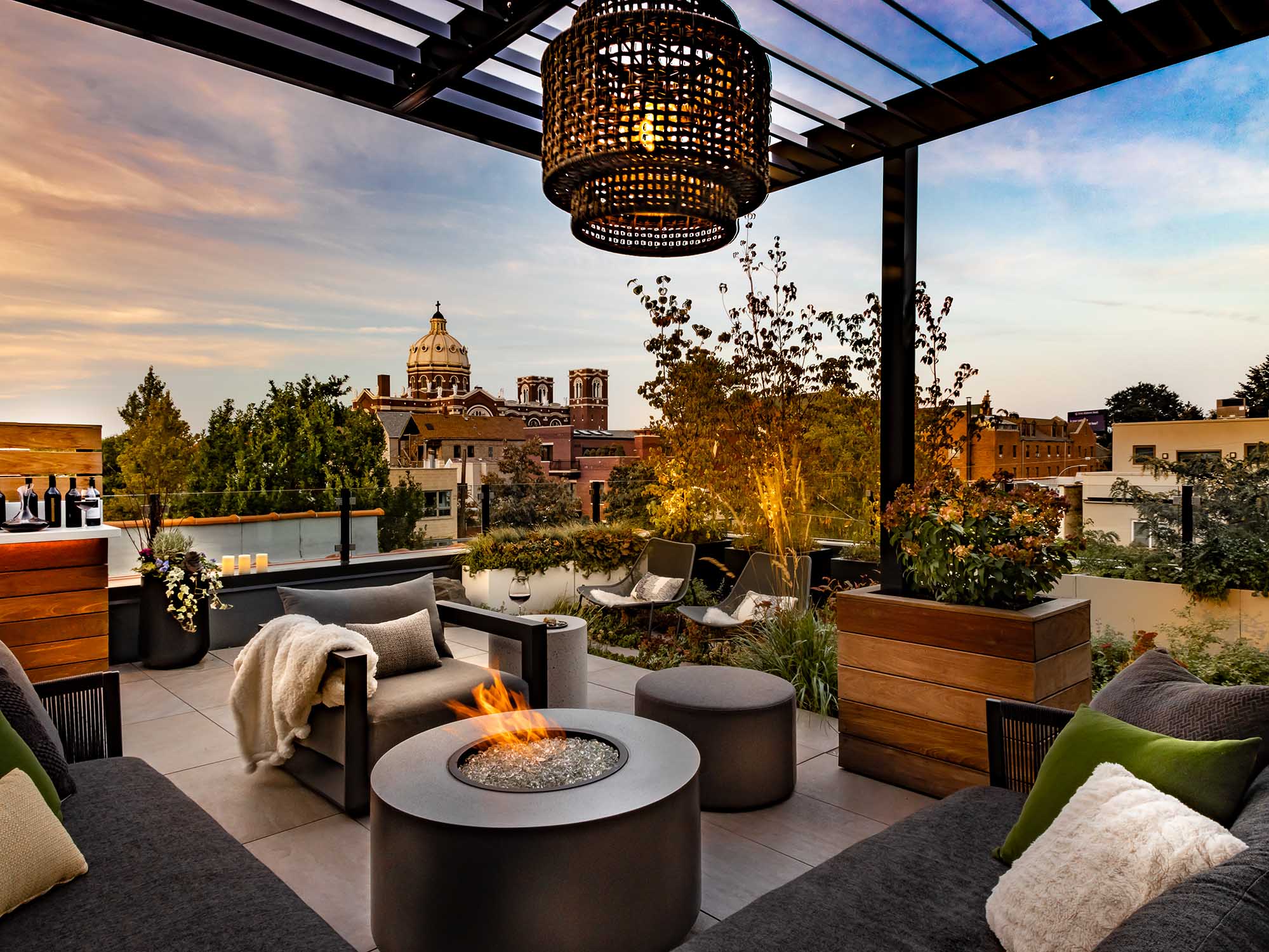
While there are numerous considerations to be mindful of when designing rooftop gardens, with a creative mindset, the sky’s the limit to what can be installed in these spaces.
“Rooftop gardens will present challenges when utilizing specific design elements, but these are just bumps in the road,” says Samantha Barrett, design manager for John Mini Distinctive Landscapes, based in Congers, New York. “Anything is possible with creative problem-solving. Realistically, creative problem solving may be expensive, so when there is a conservative budget at play, it makes sense to exclude or adapt certain features.”
Barrett says that the style of the garden, design trends and the history of the space can all inspire and dictate the design of a rooftop garden.
“There are so many cool and interesting ways to solve design problems, and rooftop spaces are new opportunities to solve problems and create design solutions in unique ways,” says Gwyneth Owen-Webber, designer and director of horticultural services for Chicago Specialty Gardens, based in Chicago, Illinois.
Capture the View
Kyle Douglas, owner of Beautiful Outdoors, based in Kansas City, Kansas, says one of the keys when designing rooftop gardens is to capture the best view.
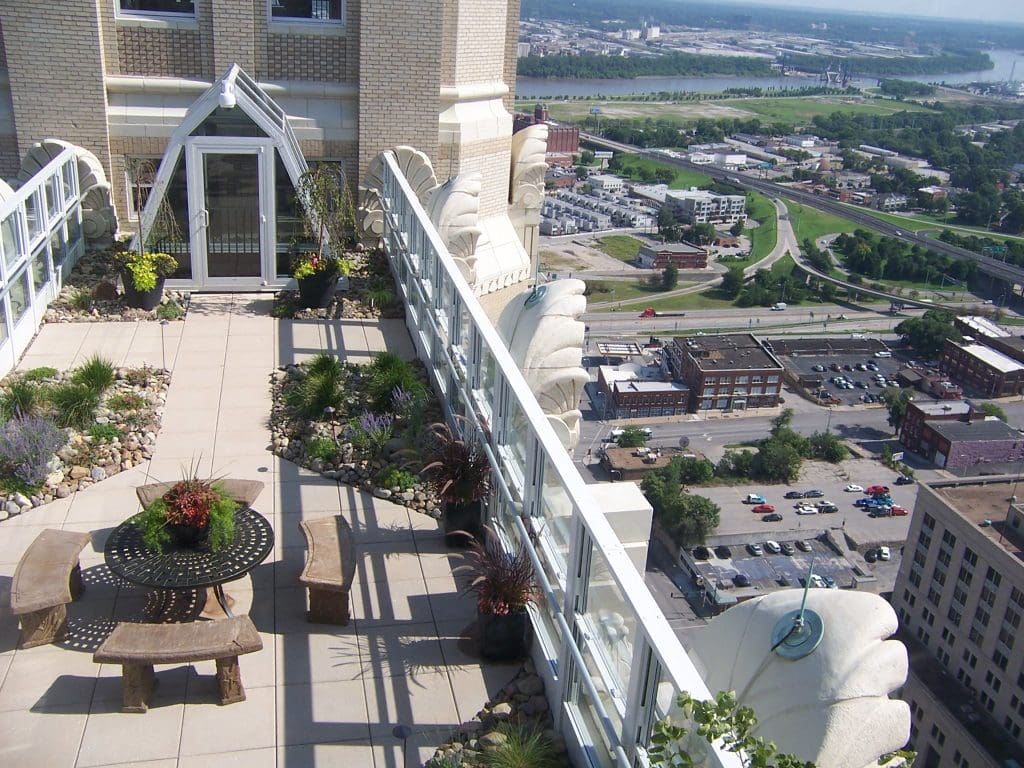
Owen-Webber agrees the vistas are important. Think through where you want to block views and where they should be left open when planning out plant placement.
Barrett adds that you should also think of how the rooftop garden is seen by the viewer from a neighboring terrace, window, rooftop, tenant within the building, or even a plane.
“It’s important to plan for this perspective by thinking through the layout on a macro scale and how that speaks to the design narrative,” Barrett says.
Seating and Shade Structures
“Shade, whether by trees, pergolas, screens, or a combination, is an essential part of a rooftop garden design to create soft shields to a glaring sun, making for a more pleasant experience,” Barrett says. “Immersive seating within the garden is another key design element, which amplifies one’s connection to nature amidst a usually contrasting urban backdrop.”
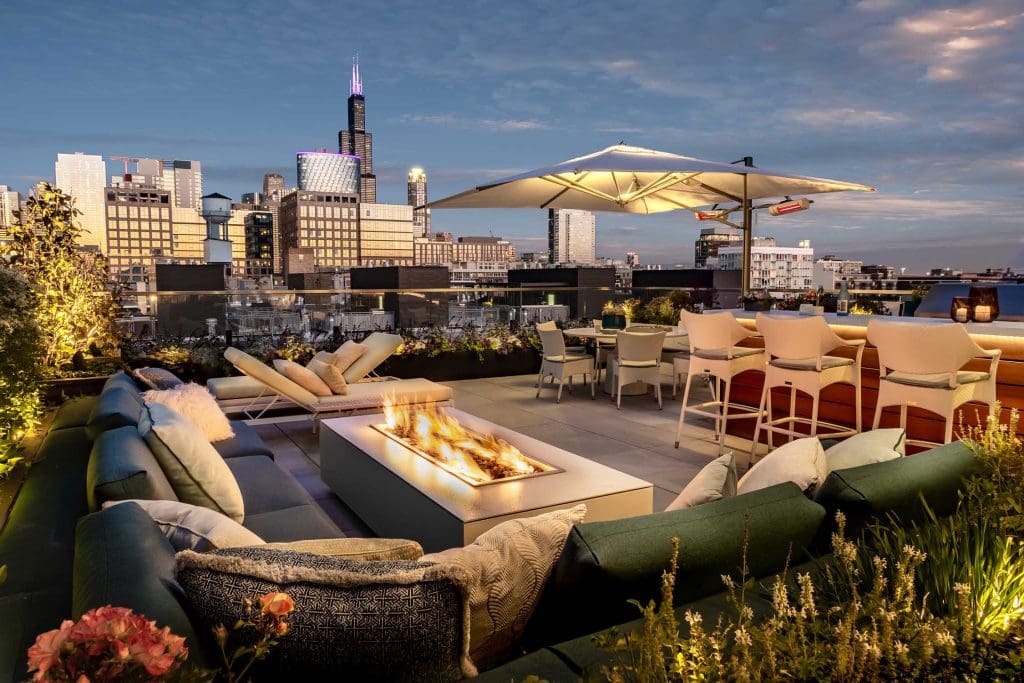
Talk with the client about how they want to use the space, what their needs are and their budget.
Wind should be considered when selecting your shade solutions. For instance, while shade sails are bold and elegant, they are also susceptible to high wind damage.
“In this scenario, I would opt for a structure with perforations or gaps to tolerate and dissipate strong gusts,” Barrett says. “To preserve the design intent, I would consider bold and elegant shapes when edging the garden or through furniture silhouettes.”
Owen-Webber says awnings and umbrellas can work for clients with a limited budget or buildings with weight load considerations. She says pergolas have loads of possibilities as well.
“From a simple structure with fixed louvers, to retractable fabric canopies, mechanical louvers with rain protection, fixed or mechanical screens for wind protection, heaters, lights, etc.,” Owen-Webber says. “However, they are heavy structures that require attachment and can therefore be tricky on rooftops with more constraints.”
Make It Multifunctional
Because most rooftop gardens are not large expanses, it’s important to make the most of the space provided by creating multifunctional elements.
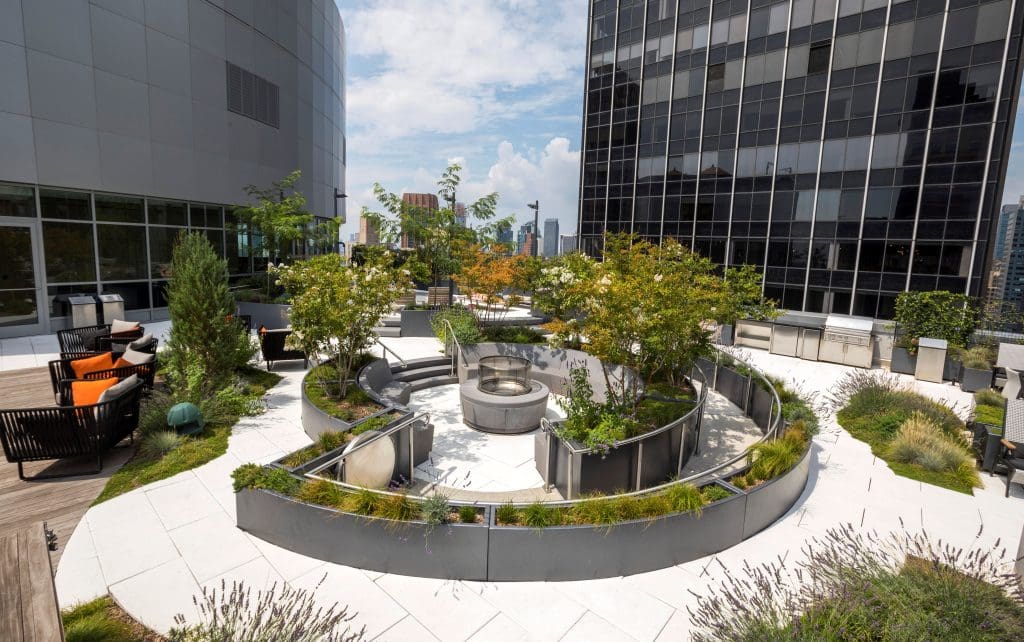
“Utilizing dynamic elements is key to getting the most out of multifunctional space,” Barrett says. “We’ll often add casters to planters and furniture to keep them mobile for quick layout shifts, and use lighting with color changing features to support mood transitions.”
Owen-Webber agrees that outdoor lighting can make space come alive at night and provides an element of safety for clients entertaining at night. She says they spec casters on many of their custom containers so they can be wheeled for access as needed.
“Provide outlets everywhere!” Owen-Webber says. “Outlets allow clients to plug in and charge their tech gadgets that make their space more usable and fun.”
Chicago Specialty Gardens also utilizes a lot of custom aluminum fire features that can become great coffee tables when not in use. Douglas says synthetic turf is particularly useful providing an area for pets and humans to play without the upkeep.
“Faux turf can also be a great way to break up a large rooftop space, and create delineation between activities,” Owen-Webber says.
Pick The Proper Plants
Selecting plants that will thrive in a rooftop garden typically calls for native, hardy plants that prefer full sun and are drought tolerant. However, some sites may have an overhang that causes full shade and offers limited insulation during the winter.

“With new construction, the urban skyline constantly changes and evolves the growing conditions,” says Matthew Wessol, director of outdoor for John Mini Distinctive Landscapes. “New, taller buildings may turn a once full sun rooftop into a partial shade escape. Working closely with the client to explain the changing conditions is a must. Each space is unique, and site conditions and client preference are what generally drive plant selections.”
Douglas says perennials, particularly root crop perennials like hostas and lilies perform well on rooftops. Grasses, sedums and succulents also do pretty well. Owen-Webber says some of their favorites include multi-stem paperbark maples, serviceberry, lilacs, witch hazels, panicle hydrangeas, viburnums, junipers, ornamental grasses (zone 4 or lower), allium, lady’s mantle, hostas, equisetum, sedums, and catmint.
“We spec at least one zone below the Chicago area for all plantings because containerized plantings need to be tough – they don’t have the insulation and protection of in-ground plantings, and are subject to more drastic freeze/thaw cycles and wind/sun exposure as well, even with the 1-2 inches of insulation we use to line our planters,” Owen-Webber says.
She encourages not leaving annuals out of your design. While they’ll need replacing seasonally or annually, they can provide pop of color to the space. When selecting plants, Owen-Webber says you also need to consider if there is an upstairs neighbor’s window that you’d block the view if you planted a tall tree below it.
“When considering elements of height, we recommend trees that are not only shade providing but flower-bearing,” Wessol says. “This adds a seasonal pop of color while also serving the utilitarian need of creating shade.”
As for plants to avoid installing in rooftop gardens, Douglas says anything with a large root ball or anything that burns up in the sun does not do well in these settings.

“Even if it is watered, the elements of the wind always make the plant thirsty, thirsty, thirsty,” Douglas says. “So, if any plant likes a lot of water, it normally doesn’t do well.”
Owen-Webber advises avoiding any plant that is marginally hardy or not spec’d correctly for the zone or exposure.
“We typically stray away from plants with tender foliage, deep root structure, or plants that will get too large for the space,” Wessol says. “Most rooftops are very exposed to the elements and such foliage will become damaged from the high winds.”
Wessol says they develop rooftop gardens to age and grow at a controlled rate.
“Growth rate and depth of root systems is just as much of a consideration as above-ground growth rate,” Wessol says. “We’ll avoid invasive species like Japanese Barberry and most bamboo plants due to their aggressive growth habits.”


